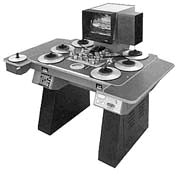Getting from Rough to Final Cut

Once you have a rough version of your film that you are happy with, there are a number of steps you can take to smooth things out and bring it to a more polished state.
-Before you do anything, I highly recommend making a copy of your rough cut in your editing program. That way you can always go back to an earlier version if you’re not happy with the changes. There is really no way to tell is something is going to work unless you try it out, so it’s always nice to have something to go back to if the video starts going in a direction you don’t like.
– Next, watch your sequence through a few times and make notes of anything that seems unnatural or awkward. The trick to editing is to make it invisible, so that it doesn’t draw attention to itself. Trust your instincts. If a shot seems out of place or the timing seems off, make adjustments to try to smooth things out. Try adjusting the length of the shot, or moving it slightly earlier or later in the sequence. Small adjustments do make a difference.
-If you’ve already started editing, you’ve probably realized that it’s very difficult to watch the same thing over and over again while still maintaining an objective eye. Don’t be afraid to take a break. It can be extremely helpful to take a couple hours off so that you can come back and look at your sequence again with fresh eyes.
-Use transitions. There are two very important transitions that will make a huge difference smoothing out your editing. The first is a ‘Fade.’ This is where the frame gradually dissolves into or out of black. A fade should always be used at the beginning and end of your sequence so that it doesn’t start or end too abruptly. The second important transition is a ‘Cross-dissolve,’ or a ‘dissolve.’ This is where one element gradually dissolves into another. It can be used between two video tracks to smooth out a cut if it seems too abrupt, and more importantly, can be used in a cut between two audio tracks to smooth out the transition. If you have a lot of cuts in your audio, you’ll notice that the sound changes abruptly and can be very jarring. The audio dissolve is great for eliminating those abrupt changes.
-That said, stay away from the other transitions. Most editing programs have a number of corny video transitions that you can play around with: Star dissolves, page wipes, spinning transitions, etc. These will only draw attention to the cut and distract the viewer. Stick with fades and dissolves.
-After you’ve adjusted all your cuts to a place your comfortable with and added transitions, you can add titles if you want. Use a basic font that’s not too distracting. Usually sans-serif fonts look best in video.
-Remember that movies have two parts: video and audio. Once you’re happy with the video part of your movie, it’s time to address any issues with the audio. The first step is to set the volume levels of all your audio tracks. This is called sound mixing, and every editing program has it’s own sound mixing tool. The idea is to adjust all of the dialogue in your video so that it’s all about the same volume level. Watch a professionally made video online (such as a movie trailer), and note how loud the sound is. Then go back into your editing program and try to bring all of your audio tracks to about the same level. If there is a lot of background noise, you can clean up your audio fairly easily using a program called Audacity (See Zen’s comment on an earlier post).
-You can also try cutting in some music at this point. This can be useful for setting a certain tone in your video, and also helps cover up any sound issues you might have. There are a number of sites online where you can find license-free music. Download a few different tracks that you like and try them out. Just remember to adjust the volume on your music too so that it doesn’t overwhelm your dialogue. Keep it relatively low in the background. Here’s a link to a site with a bunch of great music resources:
http://socialtimes.com/royalty-free-music_b37470
– At this point your video should be very close to being finished. The final step is to get feedback from other people. Show it around and ask people to be honest with you. Ask them what they liked and what they didn’t like, what worked and what didn’t. Then go back and make anyfinal adjustments.


